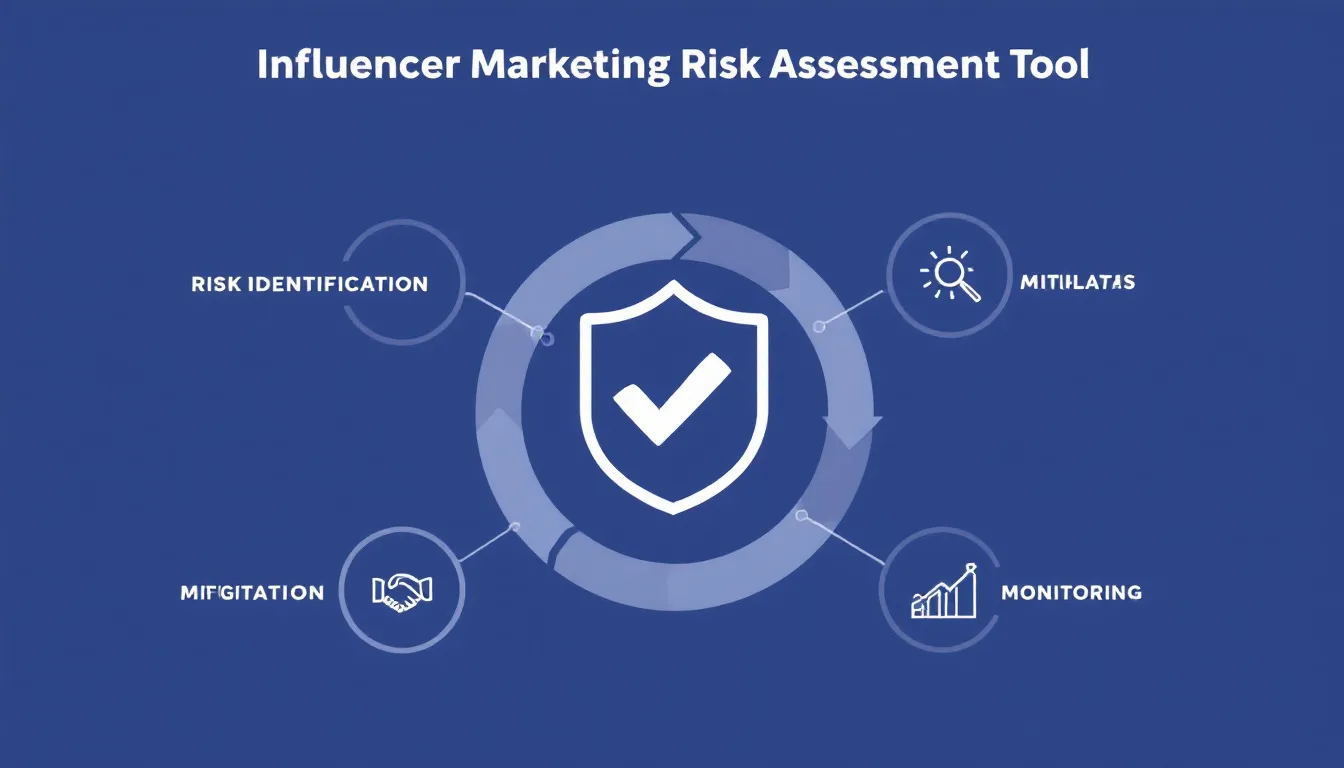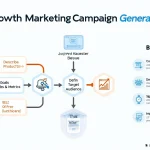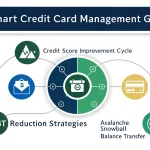Is this tool helpful?
How to Use the Influencer Marketing Risk Analysis Tool Effectively
To get precise insights from this influencer marketing risk analysis tool, provide clear and detailed information in the form fields. Here’s how to fill each section for the best results:
-
Type of Business or Industry: Specify your business sector with detail. For example:
- Sustainable outdoor gear manufacturer
- Online educational platform for professional development
-
Target Audience Description: Describe your ideal customers, including demographics and interests. For example:
- Young urban artists aged 22-35, interested in digital design and social activism
- Tech-savvy parents aged 30-45, focused on smart home devices and family safety
- Marketing Goals (Optional): Clearly state what you want to achieve with your campaign, such as increasing engagement or boosting conversions.
- Marketing Budget (Optional): Share your planned financial investment to help tailor risk and cost recommendations.
- Preferred Social Media Platforms (Optional): List your target channels, for example, LinkedIn, Pinterest, or Snapchat.
What is the Influencer Marketing Risk Analysis Tool? Overview, Purpose, and Benefits
This tool helps you identify and reduce risks in influencer marketing campaigns by analyzing key factors like business type, audience, budget, and platform preferences. It provides tailored strategies to minimize pitfalls and improve campaign outcomes.
Purpose of the Tool
The tool evaluates potential risks related to brand fit, audience targeting, budget allocation, and platform selection. It then suggests practical steps to address those risks, supporting smarter decision-making throughout your campaign planning process.
Benefits of Using the Influencer Marketing Risk Analysis Tool
- Improved Campaign Performance: Prevent misaligned influencer partnerships and messaging errors by spotting issues early.
- Cost Savings: Avoid overspending through budget risk assessments and optimize resource distribution.
- Regulatory Compliance: Get alerts on possible legal or compliance challenges specific to your industry and region.
- Strategic Planning: Gain clear, actionable advice on risk mitigation tailored to your campaign’s unique needs.
How the Tool Supports Your Influencer Campaign
By using the tool, you can:
- Assess Brand Alignment: Measure how well influencers fit your brand values to prevent reputation damage.
- Validate Audience Match: Ensure the influencer’s audience aligns with your target demographics to boost engagement.
- Evaluate Budget Risks: Forecast potential overspending or ROI challenges and adjust plans accordingly.
- Review Platform Suitability: Identify which social channels support your goals and risk tolerance.
- Prepare for Compliance: Recognize legal requirements and disclosure standards related to influencer endorsements.
Practical Use Cases for the Risk Analysis Tool
Case Study: Health & Wellness Brand Launch
- Identified risk of influencer credibility gaps related to health claims
- Designed influencer screening checklist to ensure authenticity
- Developed messaging guidelines compliant with advertising regulations
- Set KPIs to monitor audience engagement and conversion rates
Case Study: Consumer Electronics Product Campaign
- Spotted platform mismatches with the brand’s tech-savvy audience
- Recommended shifting focus to YouTube and Twitch for product demos
- Outlined crisis response strategies for potential product issues
- Customized budget allocation to maximize influencer reach and ROI
Frequently Asked Questions About Influencer Marketing Risk Analysis
What details should I provide for accurate risk assessment?
Provide thorough information about your business type, audience demographics, campaign goals, budget range, and preferred social platforms. Detailed inputs yield precise risk identification and tailored mitigation strategies.
Can I apply the tool to all types of influencer marketing campaigns?
Yes. Whether you run brand awareness drives, product launches, or content collaborations, the tool adapts to different campaign formats and industries.
How do I act on the tool’s recommendations?
Follow the custom mitigation plans offered, which include specific steps, timelines, and metrics. Adapt these guidelines to match your organization’s structure and resources.
How often should I reassess risks during a campaign?
Conduct quarterly evaluations or whenever you change your campaign objectives, audience targeting, or influencer partnerships. Keeping assessments current helps you manage evolving risks effectively.
Best Practices for Implementing Influencer Marketing Risk Assessments
Continuous Monitoring
- Track identified risks regularly to monitor mitigation progress
- Adjust strategies promptly based on performance data and feedback
- Document ongoing lessons learned to improve future campaigns
Stakeholder Collaboration
- Engage marketing teams, legal advisors, and finance early
- Review risk findings together and align on mitigation plans
- Ensure accountability and shared ownership throughout execution
Clear Documentation
- Record initial risk assessments and follow-up analysis
- Keep detailed notes on mitigation steps and their effectiveness
- Prepare reports summarizing outcomes for future reference
Important Disclaimer
The calculations, results, and content provided by our tools are not guaranteed to be accurate, complete, or reliable. Users are responsible for verifying and interpreting the results. Our content and tools may contain errors, biases, or inconsistencies. Do not enter personal data, sensitive information, or personally identifiable information in our web forms or tools. Such data entry violates our terms of service and may result in unauthorized disclosure to third parties. We reserve the right to save inputs and outputs from our tools for the purposes of error debugging, bias identification, and performance improvement. External companies providing AI models used in our tools may also save and process data in accordance with their own policies. By using our tools, you consent to this data collection and processing. We reserve the right to limit the usage of our tools based on current usability factors.







